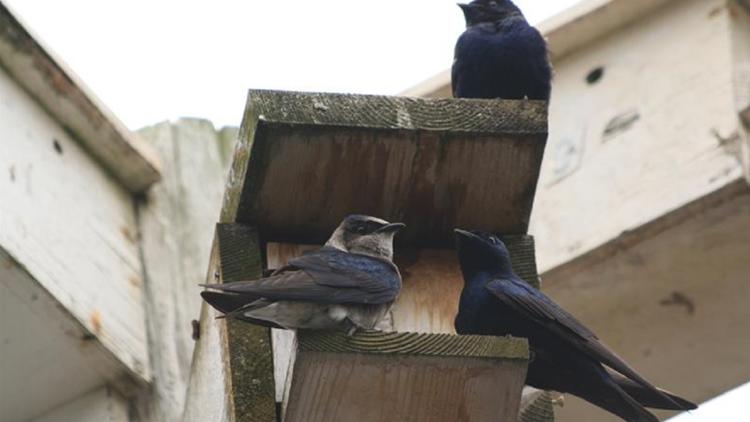TACOMA, Wash — A purple martin colony that's called Ruston Way home is being moved to a nearby estuary as the Washington State Department of Natural Resources removes more than 1,000 creosote-treated pilings.
Boxes and gourds for the birds will be fixed and installed on new posts in a tidal estuary about 500 feet south from Dickman Mill Park.
Staff from Point Defiance Zoo & Aquarium and Northwest Trek Wildlife Park are working with Communities for a Healthy Bay to remove the houses and gourds.
“Purple martins are important and valued here in Tacoma and we are dedicated to monitoring and protecting them,” said Point Defiance Zoo Conservation Coordinator Zach Hawn. “They are a species that restores balance to our ecosystem, and we want to continue to provide that habitat that is essential for the success of these colorful, playful birds.”
Purple martins are North America's largest swallow. They can often be seen at Dickman Mill Park, Titlow Beach and Chambers Bay. Based on data from Point Defiance Zoo's community monitoring program, there are approximately 110 purple martins that nest in these areas. Another colony exists at Hylebos Waterway but has not been monitored recently.
Once the Department of Natural Resources finishes removing the creosote pilings from Dickman Mill Park, new posts, boxes and gourds will be installed in time for the martins' return in the spring.
The pilings are remnants of the Dickman Lumber Mill, which operated from the 1890s to 1974, according to the Department of Natural Resources. The pilings are one of the department's "Filthy Four" structures that need to be removed.
Creosote was used to treat wood to prevent decay. However, chemicals in the treated wood has been shown to be toxic to marine species and pose a threat to human health.



